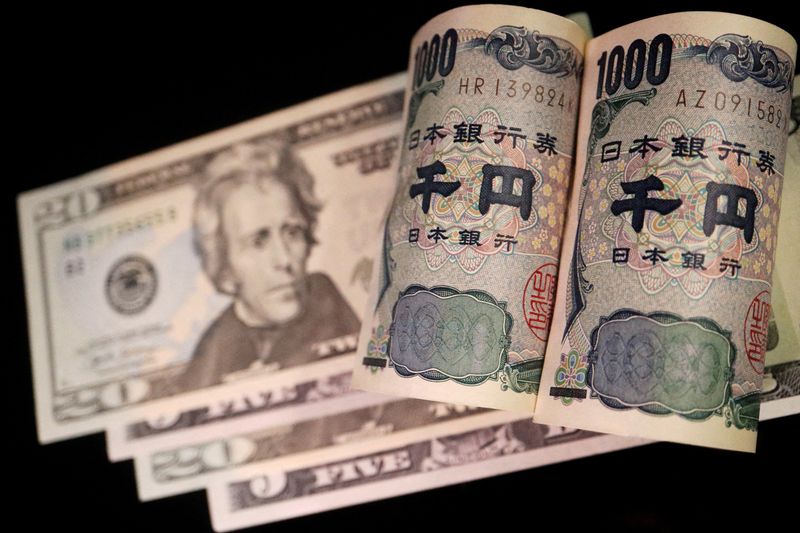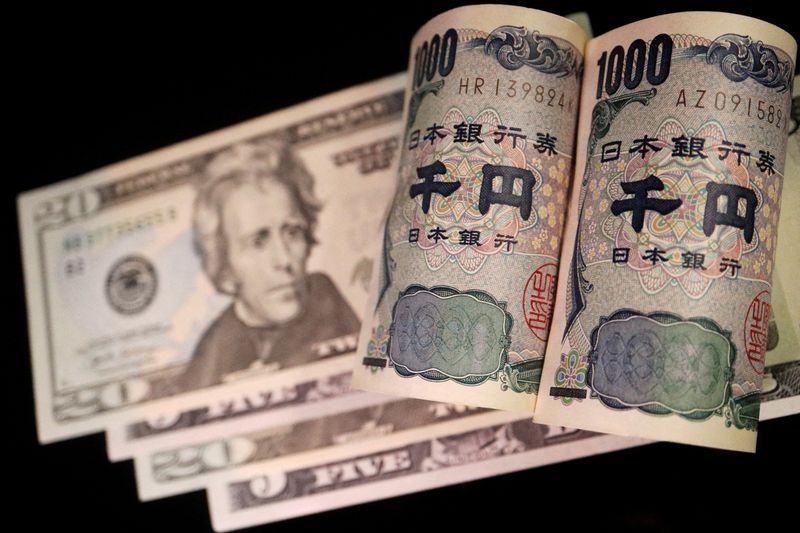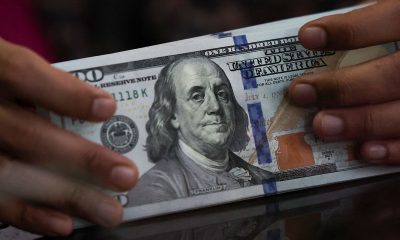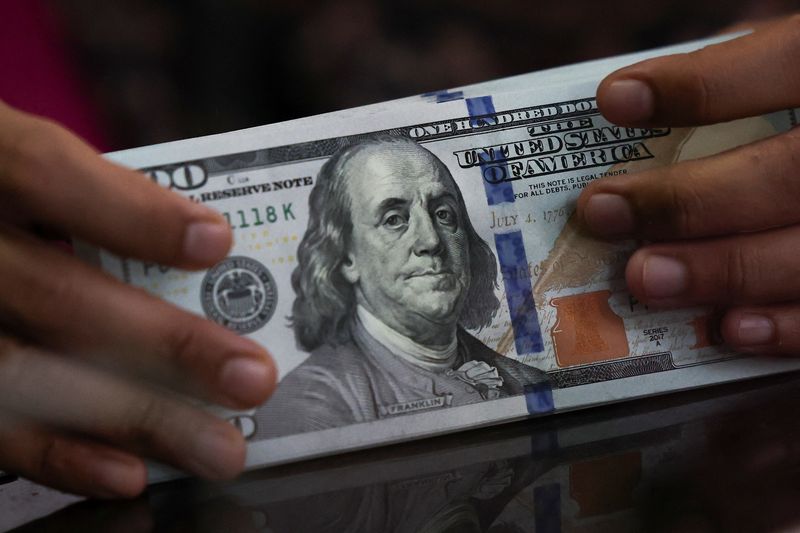Forex
Yen falls in defiance of historic BOJ shift; dollar firm


© Reuters. FILE PHOTO: Banknotes of Japanese yen and U.S. dollar are seen in this illustration picture taken September 23, 2022. REUTERS/Florence Lo/Illustration/File Photo
By Herbert Lash and Amanda Cooper
NEW YORK/LONDON (Reuters) – The yen tumbled on Tuesday after the Bank of Japan’s momentous, but widely anticipated, decision to end its negative interest rate policy, while the dollar strengthened ahead of the Federal Reserve’s latest outlook for rates.
In a historic shift from decades of massive monetary stimulus, the Japanese central bank ended eight years of negative interest rates and other remnants of unorthodox economic policy after a two-day meeting of policymakers.
As most investors had already priced in a change, the yen dropped by as much as 1% and weakened past 150 to the dollar after the news.
The yen was last down about 1.02% at 150.66 to the dollar. Against the euro, the Japanese currency similarly slid 0.8% to 163.48, around its weakest in three weeks.
“They’re very much in favor of trying to normalize the way the money market and the financial system work locally,” said Brad Bechtel, global head of FX at Jefferies in New York. “I think they’ve done a lot of big steps to get there.”
With Japan’s first rate hike in 17 years, the BOJ said it would guide the overnight call rate – its new policy rate – in a range of zero to 0.1%, adding that it expected “accommodative financial conditions” to be maintained for the time being.
That is likely to keep pressure on the yen, as rate differentials between Japan and the United States remain stark.
“The market has taken it as a green light to increase the short yen positioning that was already in place, given the forward guidance from the BOJ was fairly cautious, and not really enough to draw further hawkish repricing in the Japanese rate market,” MUFG currency strategist Lee Hardman said.
DOLLAR DOMINANCE
This week brings a raft of central bank decisions that are dominating action in the currency market, headlined by the U.S. central bank.
The Fed will deliver its policy outlook on Wednesday, when it is widely expected to keep rates unchanged at a range of 5.25% to 5.50%, though what policymakers signal about the likely course of monetary policy through their economic projections for this year and the next two is unknown.
“Anytime the Fed and the BOJ are moving policy settings at about the same time, it’s always the Fed that rules and dominates the price action, even in dollar/yen,” said Gareth Berry, Macquarie’s FX and rates strategist.
“So the BOJ’s decisions generally are, as far as the yen is concerned, a matter of secondary importance.”
The , which measures the performance of the U.S. currency against six others, is around its highest in two weeks, up 0.33% on the day at 103.90.
A recent run of resilient U.S. economic data has suggested inflation is still sticky enough to deter the Fed from cutting rates too much or too quickly this year, which has boosted the dollar.
The Australian dollar dropped after the Reserve Bank of Australia (RBA) left rates unchanged on Tuesday, as expected, but watered down its guidance over the likelihood of further rate hikes.
The slid 0.62% to a roughly two-week low of $0.6519, dragging the New Zealand dollar down 0.67% to $0.6044.
Elsewhere, a broadly stronger dollar pushed the euro and sterling to two-week lows.
The euro was last down 0.15% at $1.0855, while sterling fell 0.24% to $1.27.
In cryptocurrencies, bitcoin fell by as much as 7% to skim two-week lows, after last week’s record highs triggered some profit taking.
, the largest cryptocurrency by market value, was last down 7.27% at $62,468.

 Forex3 years ago
Forex3 years agoForex Today: the dollar is gaining strength amid gloomy sentiment at the start of the Fed’s week

 Forex3 years ago
Forex3 years agoUnbiased review of Pocket Option broker

 Forex3 years ago
Forex3 years agoDollar to pound sterling exchange rate today: Pound plummeted to its lowest since 1985

 Forex3 years ago
Forex3 years agoHow is the Australian dollar doing today?

 Cryptocurrency3 years ago
Cryptocurrency3 years agoWhat happened in the crypto market – current events today

 World3 years ago
World3 years agoWhy are modern video games an art form?

 Commodities3 years ago
Commodities3 years agoCopper continues to fall in price on expectations of lower demand in China

 Economy3 years ago
Economy3 years agoCrude oil tankers double in price due to EU anti-Russian sanctions





























